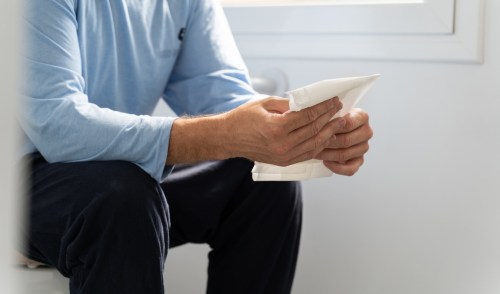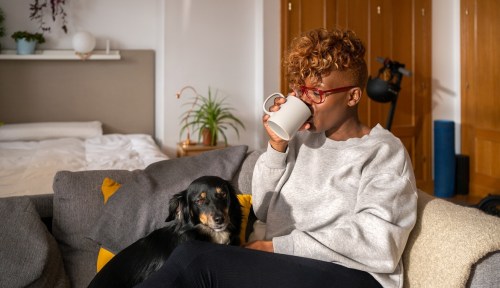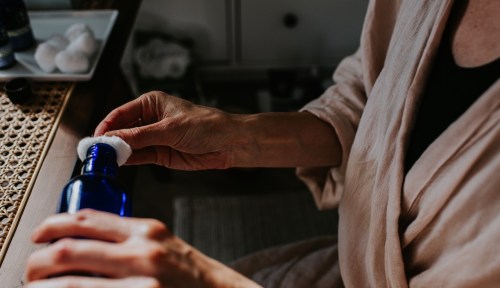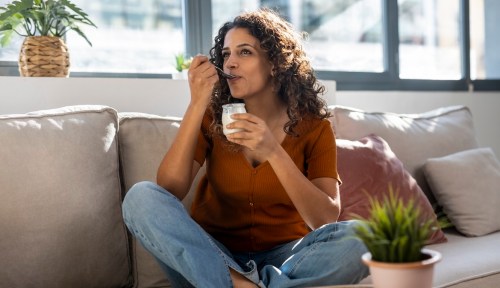Our editors independently select these products. Making a purchase through our links may earn Well+Good a commission
You’ve done your reading, and you’ve got the fiber scoop down. You understand that fiber is found in fruits, vegetables, whole grains, beans, and legumes; and that it promotes gut health, low cholesterol, and low blood sugar, and helps you feel full longer. You’ve even started trying to eat more fiber.
Basically, you’ve mastered the 101-level life course on fiber. But experts say to really reap all of the nutrient’s benefits, you need to get serious about your fiber intake. Consider this your 201-level guide to eating more fiber…you know, without becoming a gassy, farty mess.
1. Eat more of it than you think you need
The USDA’s 2015-2020 dietary guidelines for Americans recommend 14 grams of dietary fiber per 1,000 kcals a day. That translates to a recommendation of between 25.2 and 28 grams of dietary fiber each day for women ages 18 to 50.
Women in the U.S. get, on average, 15 grams a day, which means you likely need way more than you’re consuming, even if you’ve already significantly upped your daily amount. “I think [my clients] overestimate the amount that they get from certain things and don’t realize that it’s actually not so simple to get that 25 grams without a little bit of planning,” says Lauren Harris-Pincus, MS, RDN, founder of Nutrition Starring You and author of The Protein-Packed Breakfast Club. “They’re like, ‘I had a big salad,’ and it was like three grams of fiber, because lettuce doesn’t have that much.”
2. Keep prioritizing whole foods fiber sources
That doesn’t mean you should just reach for a powder or supplement and call it a day. “You should always try and get your nutrients—whether it’s fiber or your vitamins—from whole foods first,” says F-Factor founder Tanya Zuckerbrot, MS, RD. “And that’s because whole foods are going to not just have that nutrient, but other nutrients. And they provide satiety, and they’re yummy.” Some high-fiber food examples: Raspberries have a surprising eight grams of fiber per cup. Boiled black beans pack in 15 grams per cup. And whole wheat cooked spaghetti has six grams per cup.
If you’re struggling to hit that 25 gram minimum fiber count through natural means, supplementation is something to consider. (Say if you have food allergies or sensitivities that force you to limit consumption of certain fibrous foods, like grains or legumes.) “The word ‘supplement’ simply means that your diet is being supplemented with a certain vitamin or nutrient because it doesn’t have enough of it,” says Zuckerbrot. “So it’s not called a replacement; it’s not supposed to replace foods with that nutrient.” If you have to do this, Zuckerbrot suggests powder over pills. “You’re not using it just with water,” she explains. “You’re actually combining it with other foods and making recipes, so you’re enhancing the nutrients that you’d be eating anyway.”
Looking for high-fiber inspo? Try Shailene Woodley’s go-to, fiber-filled brekkie:
3. Don’t stress too much about soluble versus insoluble fiber
As a fiber pro, you likely already know that there are two types of it: soluble and insoluble. Think of the former as a sponge, says Zuckerbrot. It soaks up water, fat, and cholesterol, and that’s how fiber keeps you feeling full longer. Insoluble fiber—sometimes called roughage—is more like a broom, explains Zuckerbrot. It keeps things moving through your digestive tract, and lowers the risk of colon cancer and diverticular disease.
While it’s good to be aware of both (and their respective benefits), you don’t have to worry too much about which types of fiber are in which foods, says Zuckerbrot. “Most foods actually have a little bit of both,” she says. “I find that if you focus on getting enough [total] fiber in your diet, you’re going to get a combination of both. You’ll get enough of each.” Hopefully that takes a bit of stress out of your high-fiber menu planning.
4. Slow and steady wins the fiber intake race
Some people handle extra fiber like a boss, and others react super strongly to it. “I have people who eat 100 grams of fiber a day and it doesn’t faze them, and you have people who eat 10 [grams] and they’re like, ‘Wow,’” says Harris-Pincus. “It just really depends on you. I would recommend just increasing by a serving or two a day for the first week, and then bring it up another one, and just see how you do.”
Start with a fiber-rich breakfast to rev up your metabolism and get going right away on your fiber goals. “This way [you] don’t have to catch up later in the day,” says Zuckerbrot. “The other thing I like about having fiber early in the day is that you don’t want to go to bed with a big belly [because you saved] all of your fiber for dinner. You’re not going to be comfortable.”
Zuckerbrot also suggests spending more time eating your meals when you can (aim for at least 20 minutes per meal), because chowing down quickly can cause you to take in more air, which can get trapped in your stomach and lead to more bloating. Be sure to simultaneously increase your water intake when eating more fiber so you don’t feel the results in your bathroom habits. Everyone needs different amounts of H20 depending on their activity level, the climate, their weight, and so on, but Zuckerbrot says to aim for something like three liters a day.
If you feel bloated and distressed when you start adding in fiber, scale it back a little bit until your body can get used to its new levels, or consider consulting a dietitian for help increasing your fiber in a way that works for you. But if you’re, um, a little farty, that’s probably fine, says Harris-Pincus. “Being a little gassy is not a bad thing. It kind of means your digestive tract is working,” she says. “If you are physically uncomfortable, and you feel distended, that’s very different than, like, ‘I ate some beans, and it makes me have to pass some gas.’” The latter, she says, is perfectly normal. (Good. To. Know.)
Looking for easier ways to boost your fiber intake? Check out these easy high-fiber breakfast and dinner recipes.
Sign Up for Our Daily Newsletter
Get all the latest in wellness, trends, food, fitness, beauty, and more delivered right to your inbox.
Got it, you've been added to our email list.











